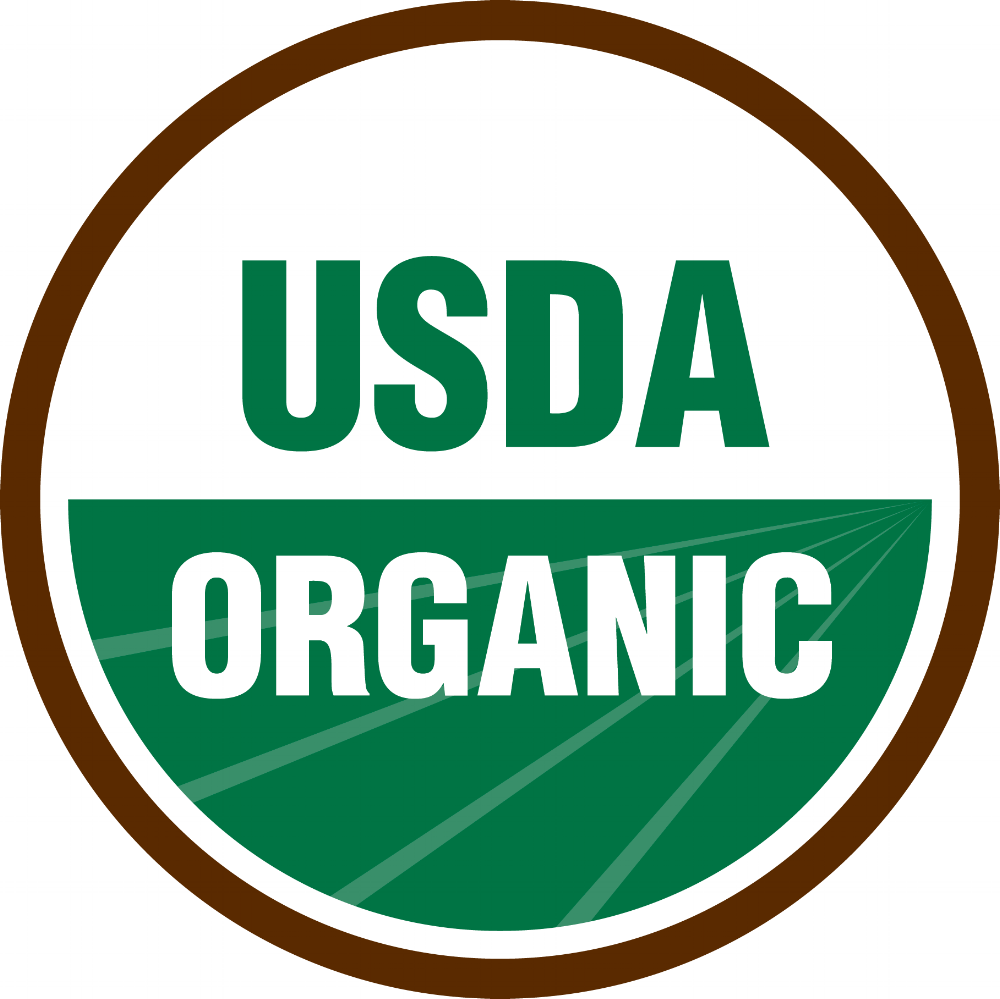Organic, Natural, Humane, Non-GMO..... What do they mean?
When faced with so many labels and certifications on our food these days, it can be confusing to know what they all mean and if a colorful stamp or phrase on food packaging is meaningful or just targeted marketing. Some certifications are federal government mandated for safety as well as transparency so that consumers know what they are buying.
The USDA National Organic Program (NOP) defines organic as follows: Organic food is produced by farmers who emphasize the use of renewable resources and the conservation of soil and water to enhance environmental quality for future generations. Organic meat, poultry, eggs, and dairy products come from animals that are given no antibiotics or growth hormones. Organic food is produced without using most conventional pesticides, fertilizers made with synthetic ingredients or sewage sludge, bioengineering, or ionizing radiation. Before a product can be labeled "organic," a Government-approved certifier inspects the farm where the food is grown to make sure the farmer is following all the rules necessary to meet USDA organic standards. Companies that handle or process organic food before it gets to your local supermarket or restaurant must be certified, too.
It takes three years for a farm to achieve "organic" certification by the USDA. The first two years consist of converting and building up the fertility of the land. Produce grown in the first year is cannot be stated as being organic. The second year produce is referred as being “In Conversion”. It is not until the third year that produce may be certified as fully organic. Once farms are Certified Organic they are inspected at least once a year and is verified via field-site audits and chain-of-custody data.
This nonprofit alliance’s 5-Step Animal Welfare Rating Program currently extends to beef cattle, broiler chickens, pigs, and turkeys (the organization recently closed a public comment series for pilot standards on meat sheep, goats, and bison). All farmers must be higher than Step 1 (no cages, crates, or crowding) to enter the program. To reach Steps 2 through 5, farmers must ensure animals have access to an enriched environment, the outdoors, or pasture. Each species-specific set of standards outlines criteria for feed and water usage, medication use, and breeding.
Third-party verified by field-site audits. Must meet detailed and rigorous standards. Requires humane treatment, open pastures, and a grass-only diet for all animals and prohibits use of all antibiotics and hormones. Annual renewal of certification required.
Pasture-Raised
There is no legal definition or USDA regulation for use of the phrase "pasture-raised". The term is generally believed to mean that cows were grazed outside (weather permitting), eating a natural grass based diet and getting natural exercise.
Claim is verified by Humane Farm Animal Care and meets detailed and rigorous standards set by third party organization. Standards are in place to ensure appropriate health, shelter and handling as well as complying with environmental standards. It prohibits growth hormones and allows antibiotics for sick animals only.
Verified by Animal Welfare Approved, a third-party organization. Specifies detailed and rigorous standards. Requires that animals be raised outdoors on pasture or range on family farms that meet the "most stringent" welfare standards, according to 2008 and 2009 reports of the World Society for the Protection of Animals. Allows antibiotics only for sick animals.
Is third-party verified, addresses multiple issues, and meets rigorous standards regarding safe and fair working conditions, humane treatment of animals, reduced use of toxic and hazardous materials, soil health, water quality and wildlife habitat.
Third-party verified certification setting high standards for environmental protection, worker rights and welfare, and the interests of local communities. Some pesticide use is allowed., addresses multiple issues, and meets rigorous standards that were developed via open or consensus-based process.
Claim is third-party verified and meets rigorous standards that were developed with broad stakeholder input. Verifies that all ingredients (though not all final products) are tested for genetically modified organisms and found to contain no more than 0.9 percent GMO.
Free Range
If you see this term on eggs or beef, it has little meaning. The USDA only defines the claim in relation to chicken, and even then, outdoor access can be limited to just five minutes a day.
The product was produced in a way that keeps Pacific Northwest rivers clean for native salmon to thrive and reproduce through practices such as limiting pesticides, planting riverside trees and improving irrigation — all verified by a third-party certifier.
Product is made by a rigorously screened member of the Fair Trade Federation, a company that is fully committed to fair trade principles including safe working conditions, children’s rights, fair wages, cultivating environmental stewardship and respecting cultural identity.
No Additives
This label is verified through manufacturer-provided information. New food additives and color additives are considered food under the law and must be approved for safety. Manufacturers submit information they choose to verify safety and efficacy. Food additives that have a long history of use in foods without problems do not require premarket approval.
Natural
This claim found on meat, is managed by the USDA but not verified by a third party. Meat and poultry labeled "natural" must not contain added colors or artificial ingredients and must not have been processed so as to "fundamentally alter the raw product." Neither the USDA nor the FDA regulates or defines the term "natural" for any other food products, leaving the decision to use the term up to the manufacturers. There is no auditing process required to meet requirements. Farmers and manufacturers can hire their own inspectors.








